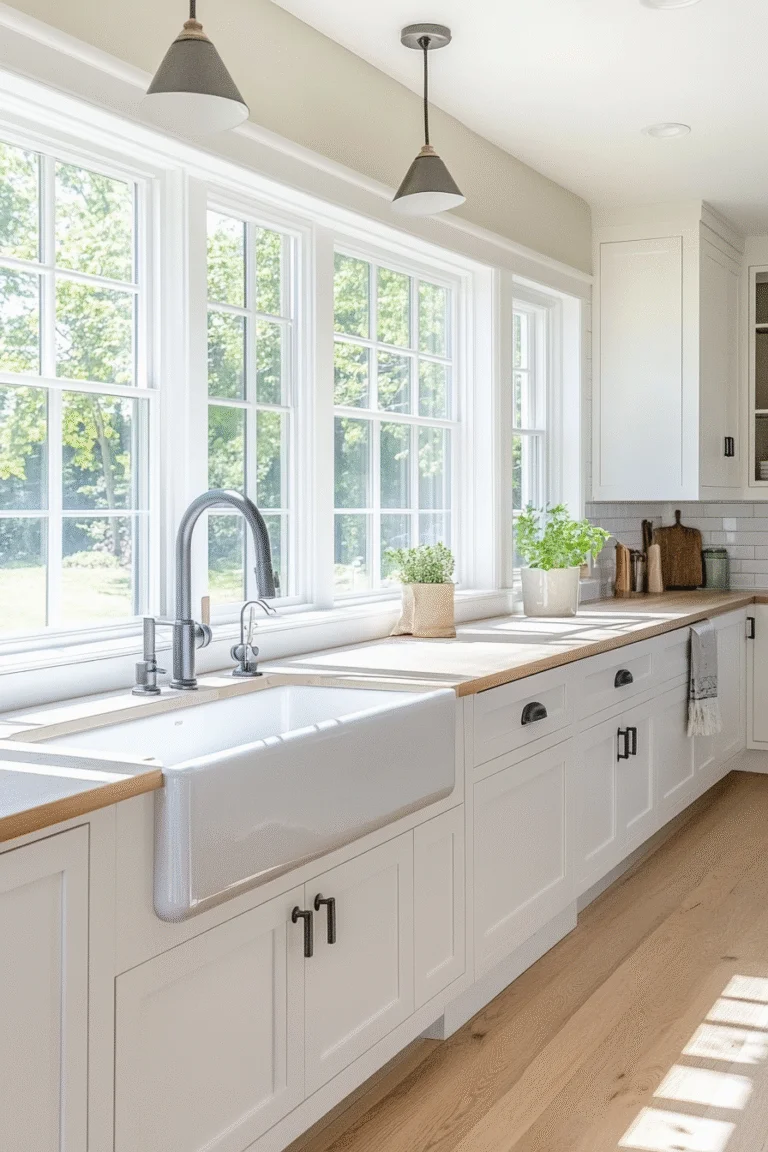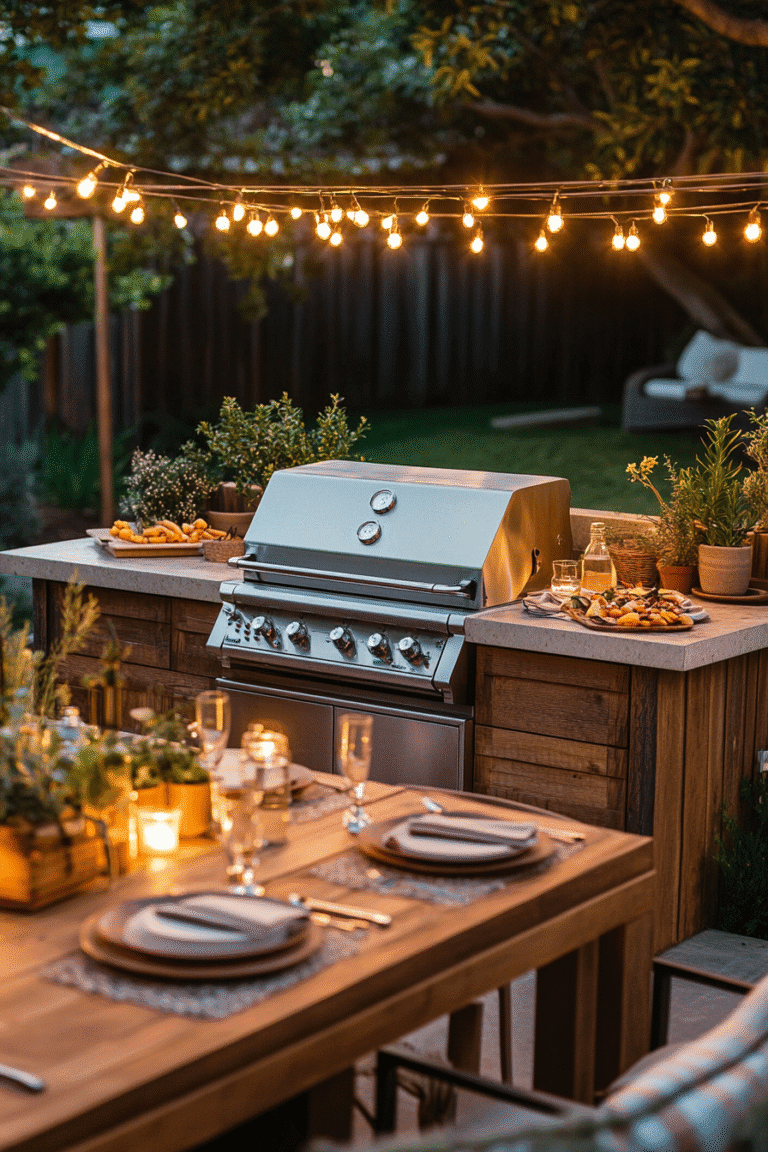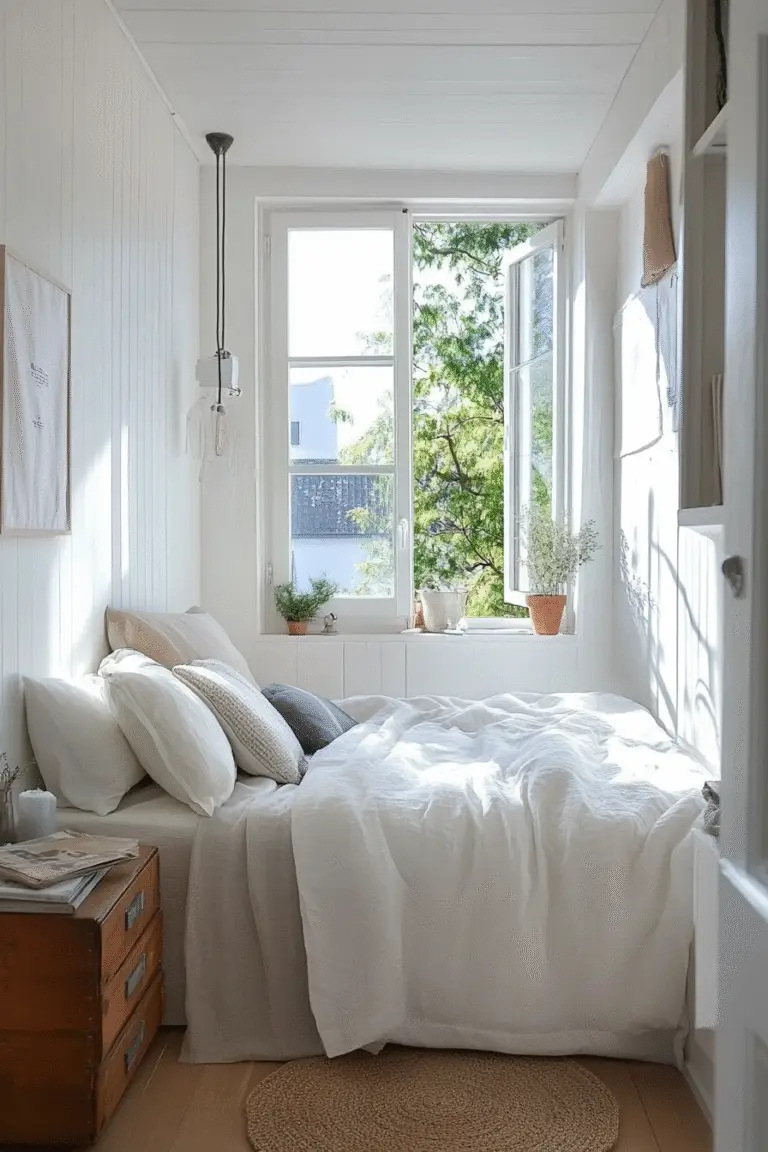
If you’ve been losing sleep over steep hill landscaping ideas, you’re not alone. I’ve stood at my kitchen window at 2 AM, side-eyeing my slope like it was plotting against me. Every rainstorm? A mudslide in waiting. Every google search? Perfectly flat yards smugly pretending slopes don’t exist.
But let me tell you something: that steep hill? She’s not a problem — she’s a power move. With the right slope landscaping strategy, you can turn that dirt slip-n-slide into the star of your yard — one that fights erosion, shrugs off maintenance, and looks designer-level on a DIY budget.
I’ve made the same mistakes. The dead plants. The mulch avalanches. The “maybe I should just pave it” moments. But I’ve also figured out what works — how to layer, anchor, and plant like a slope whisperer. And that’s what this post is here for: to help you turn your pain-in-the-ass incline into a total showpiece.
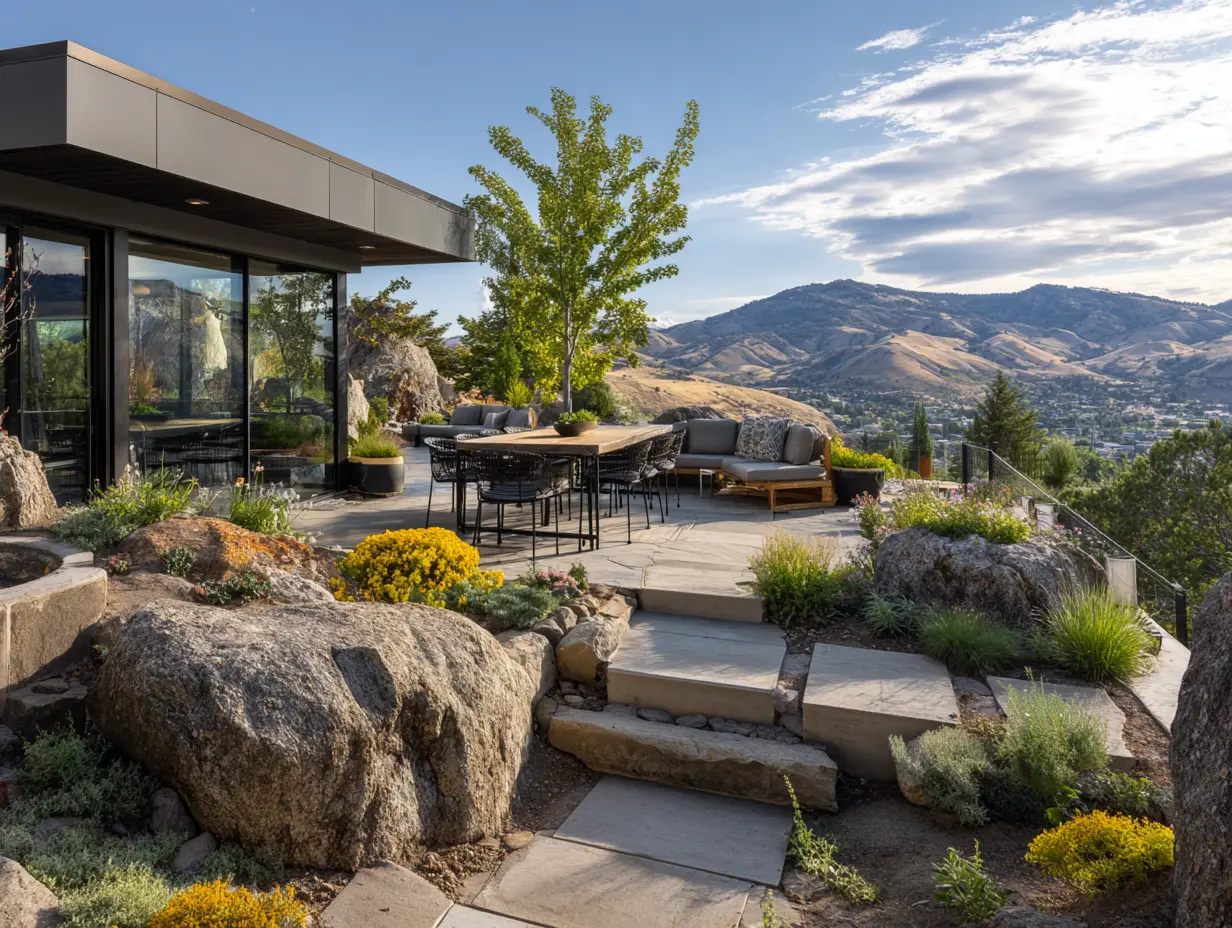
1. Ground Covers for Steep Hill Landscaping Ideas That Beat Erosion
Bare soil on a slope is just asking to misbehave. If you don’t cover it, it’s going to run — fast. Ground covers are your first line of defense, acting like nature’s Velcro to keep everything in place. Creeping phlox and vinca vine across the ground like pros, pachysandra thrives in shady spots, and clover not only looks good but boosts soil health too.
For uneven yard landscaping that holds strong, layer in Scotts Pro Landscape Fabric. It locks the soil in while roots establish. Deep-rooted, fast-spreading plants will hug that slope like they mean it — and save you from chasing topsoil after every storm. Think of this as your slope’s first security blanket.
Want more no-fuss, high-impact landscaping ideas? Don’t miss our guide to Rustic Front Yard Landscaping That Wows Without the Work — it’s all charm, no chaos.

2. Terracing Without the Construction Crew
Terraced landscaping ideas don’t have to come with a backhoe and a bank loan. If you’re exploring steep hill retaining wall ideas, start small. One simple terrace is like a trial run for your sloped yard landscaping glow-up. Even a single level adds definition, slows runoff, and gives your slope some structure without draining your wallet.
For a sleek, DIY-friendly solution, RTS Retaining Wall Blocks snap together like adult LEGO, handling soil pressure like pros. Test one tier through the seasons before going full hillside amphitheater. Bonus: this kind of terraced slope landscaping makes your yard look intentionally fabulous instead of chaotically sloped.

3. Best Low-Maintenance Plants for Slope Landscaping
Slopes don’t want fussy plants — they want warriors. Native species are nature’s MVPs when it comes to backyard slope ideas. They’re already toughened up for your climate, so they stand tall through wind, heat, and torrential tantrums. Go for shrubs like sumac or elderberry for structure, and mix in ornamental grasses like fountain grass or switchgrass to keep it textured year-round.
For easy color and erosion control in one, grab the Mountain Valley Steep Slope Wildflower Seed Mix — it’s the lazy gardener’s dream. These low-maintenance plants do all the heavy lifting, turning your slope from washed-out to wow with way less work.

4. Transform Your Steep Hill Into a Showpiece
That hill isn’t mocking you — she’s waiting for her moment. With the right moves, your steep hill landscaping can go from problem to centerpiece. Boulders aren’t just heavy rocks — they’re anchors, statement pieces, and secret erosion fighters.
Stack your planting by height — taller shrubs and grasses in back, trailing stunners like creeping Jenny or petunias up front. For extra stability and style, the Brown Decorative Rock Boulder Set adds natural charm while keeping things anchored. Add low-voltage uplights, and suddenly your slope’s not just a day beauty — she works the night shift too.
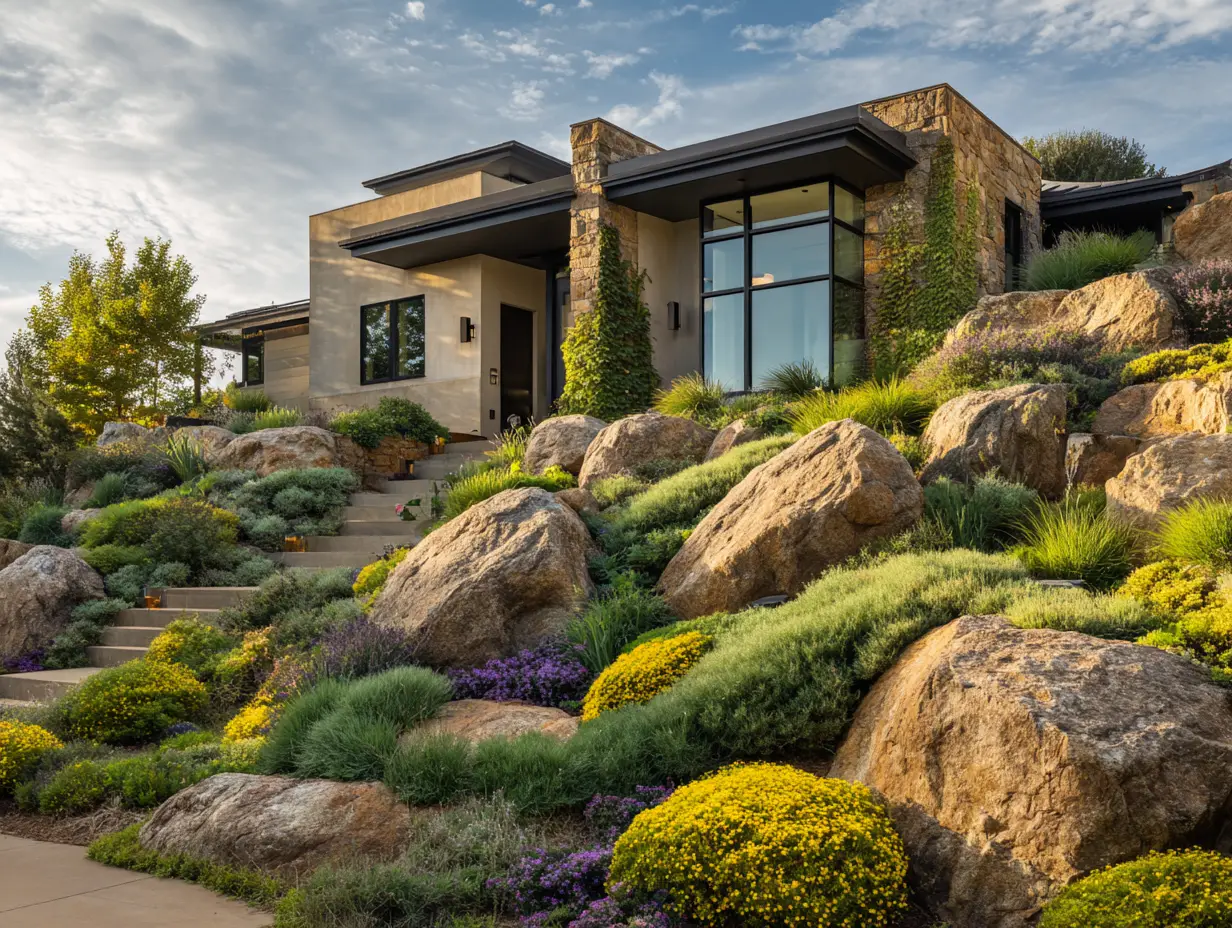
5. Designing Functional Spaces on Slopes
Just because your yard tilts doesn’t mean you can’t make it work. Smart hillside landscaping turns awkward inclines into inviting, usable areas. Switchback pathways reduce the grade while giving you different vantage points of your slope landscaping. Stepping stone trails soften the look, improve safety, and pair perfectly with slope-friendly plantings along the edges.
For stable footing, the Stepping Stone Pathway Kit offers slip-resistant surfaces that blend into modern designs. Add built-in slope seating for a hillside lounge or tiered decks for dining and gardening zones. By designing around the slope instead of flattening it, you get a functional, stylish yard that’s easy to navigate.

6. Working With Natural Water Flow
Newsflash! Water’s gonna do its thing. And on a slope? That thing is downhill destruction… unless you outsmart it. A rain garden at the base catches runoff, turning problem water into a pollinator paradise. Iris, swamp milkweed, and rushes don’t just survive wet feet — they thrive.
To keep roof runoff from turning into a soil slide, install the Rain Gutter Downspout Extension Kit and aim it toward your rain garden. During dry spells, a dry creek bed lined with smooth river rocks adds structure, style, and a natural flow line — even without water. The right design works year-round, whether nature’s pouring rain or serving up sunshine.
Working with a small yard too? Check out our favorite Small Backyard Design Ideas on a Budget for clever ways to double your space without doubling the cost.
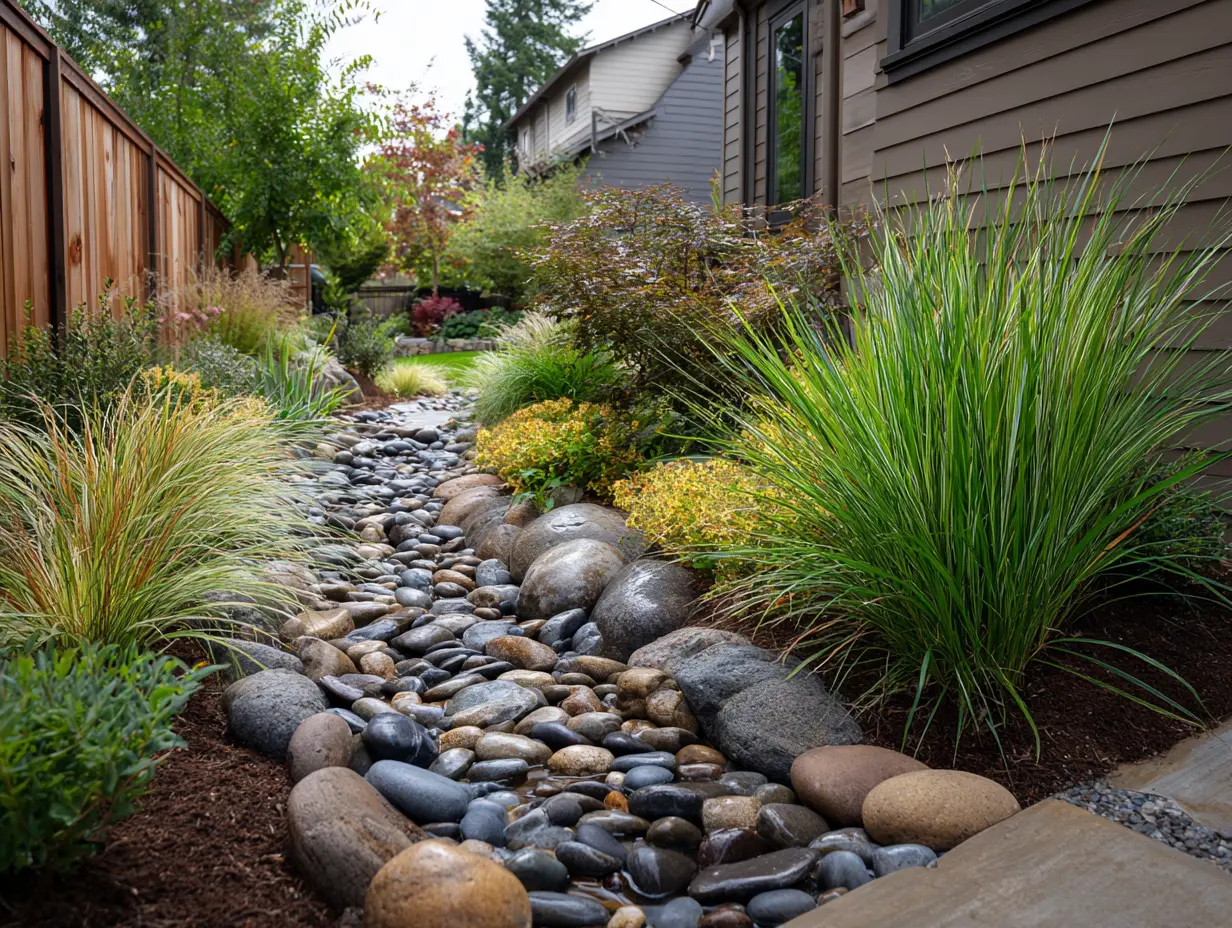
Seasonal Slope Care for Sloped Garden Ideas
Sloped gardens don’t get to take a season off — and neither do you. Spring is prime time to fix winter’s mess: replant bare patches, edge pathways, and mulch like you mean it. This gives roots the full growing season to settle in before the elements test them.
Before cold weather hits, swap out lightweight mulch for shredded bark that clings to slopes and resists washouts. For areas still struggling — whether it’s waterlogged zones or foot traffic troublemakers — the Coir Erosion Control Mat delivers tough, long-term protection that blends naturally into your landscape.
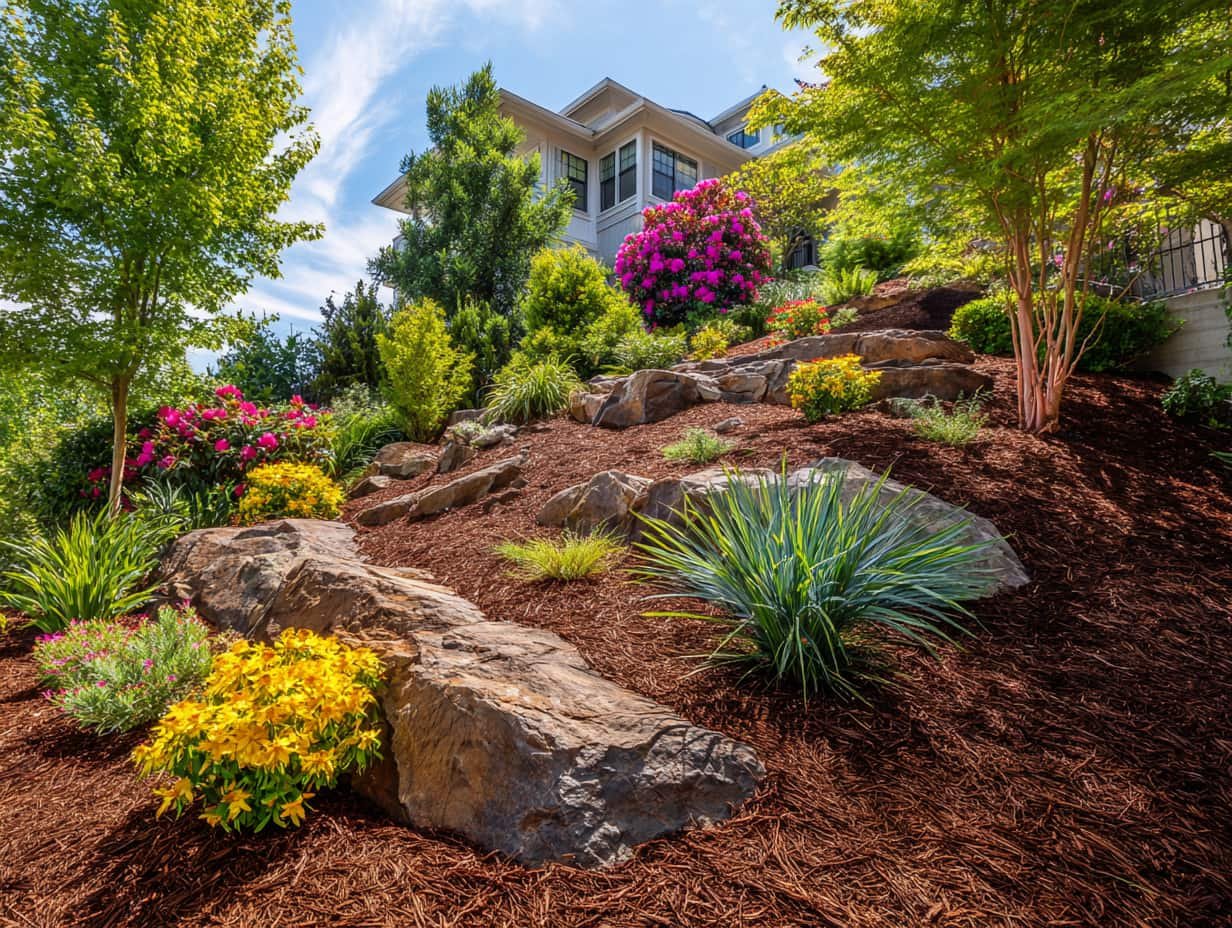
Troubleshooting Uneven Yard Landscaping Problems
Even the best slopes have their drama. Watch for water pooling, channels forming, or ground covers ghosting mid-season. Troubleshoot by redirecting flow with berms or swales, toughening up your plant game with native species, and locking down erosion-prone spots with strategic replanting.
For hard-hit zones, anchor deep-rooted ground covers with a layer of shredded bark or gravel mulch to stop soil slippage. And don’t forget access — permanent paths made from flagstone, pavers, or timber steps make it easy to maintain your slope without turning it into a landslide. A few smart moves now = fewer slope meltdowns later.
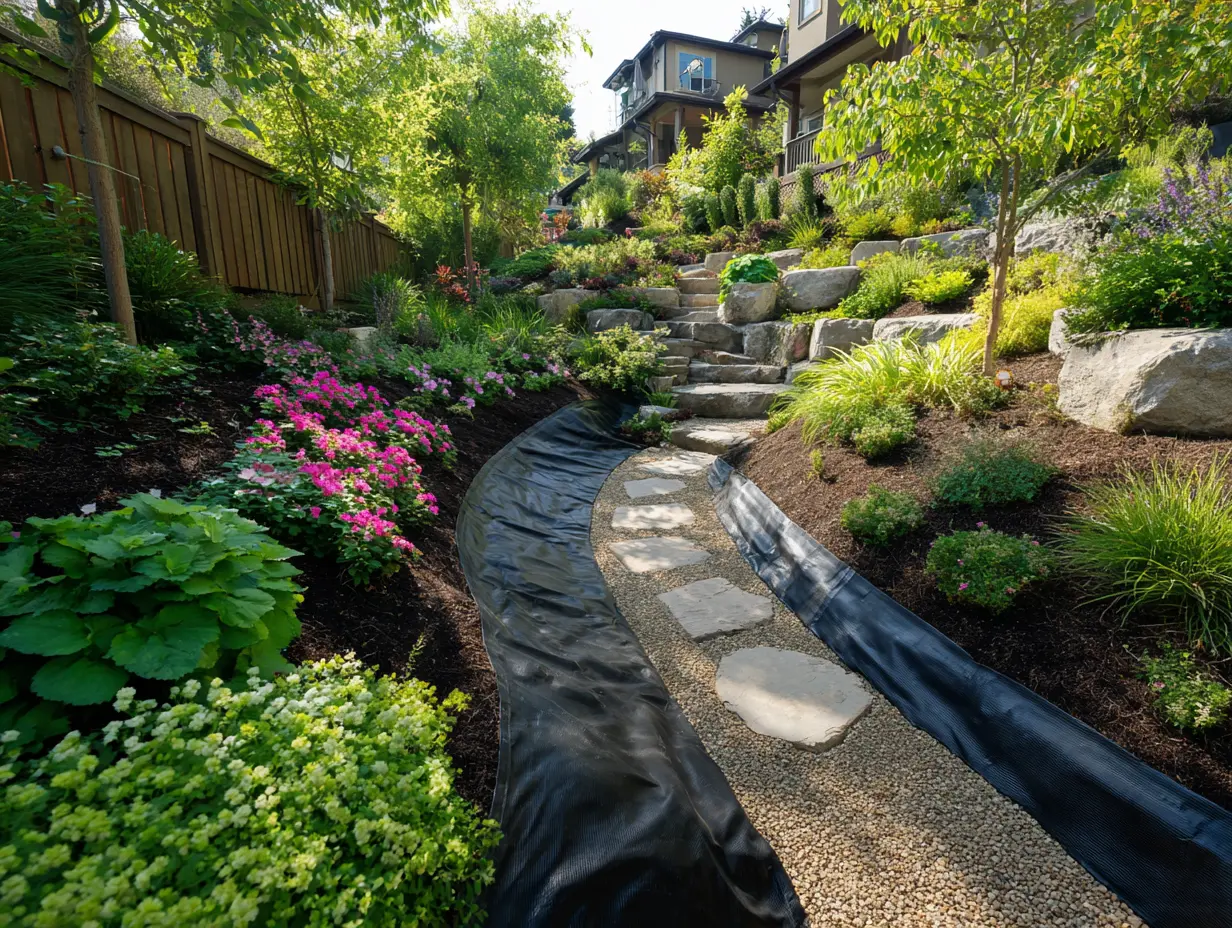
Long-Term Slope Success
Slope success isn’t a weekend fling — it’s a long-term relationship. You’ve got to woo that hillside with quick wins first: fast-spreading ground covers to lock in soil before it makes a break for the neighbor’s driveway. Then, once she’s feeling stable, layer in slow-growing shrubs and perennials for depth, texture, and all-season curb appeal.
Spacing is key — cram too much in and you’ll block airflow, invite rot, and hide trouble spots until they’re throwing a full-on erosion tantrum. For tidy edges without wrangling 50 feet of cord, the Greenworks 40V Cordless String Trimmer is your new BFF. Check in often, trim the chaos, and swap out slackers. This is how you raise a slope that behaves.
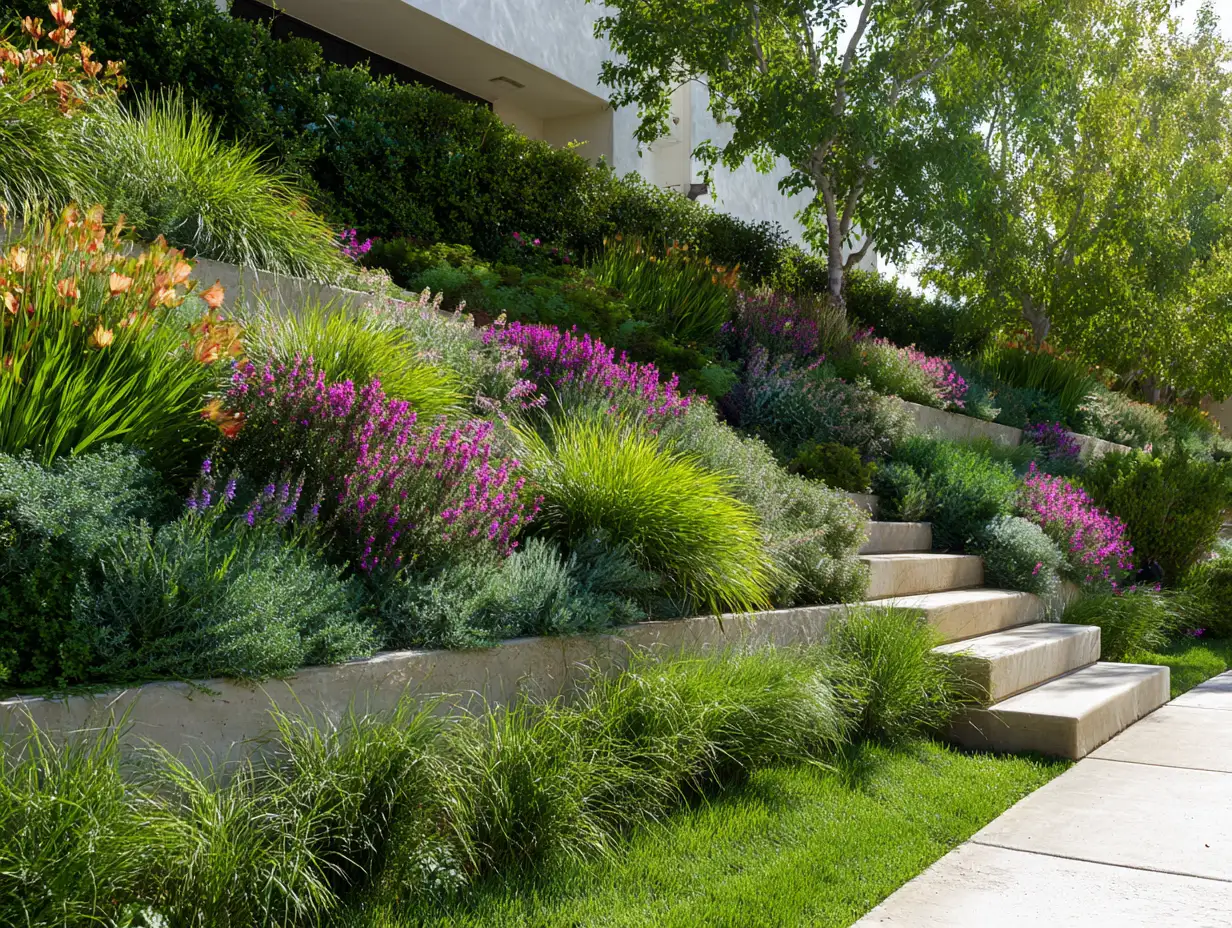
FAQ – Steep Hill Landscaping Ideas
What is the cheapest way to landscape a steep hill?
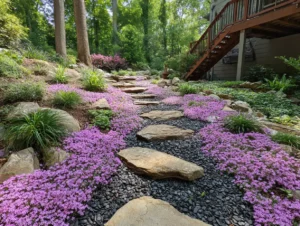
Skip the bulldozer. Creeping phlox, vinca, and clover are your budget-friendly slope squad — spreading fast, fighting erosion, and asking for very little in return. Add mulch, give it a minute, and boom: your slope goes from neglected to natural beauty. No heavy lifting, no heavy spending, no regrets.
What plants work best for steep slope landscaping?
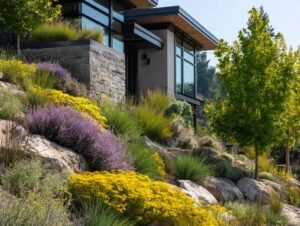
Native plants don’t play. Go for deep-rooted shrubs like sumac, ornamental grasses like switchgrass, and perennials like wild bergamot. They’re tough, low-maintenance, and act like plant bodyguards for your slope. The best part? They work with your climate, not against it — so you spend less time babysitting and more time winning.
How can I prevent erosion on a hillside?
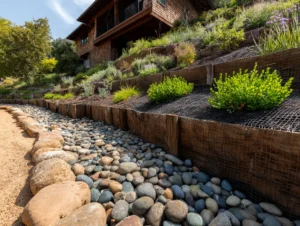
Erosion’s a bully — but you’ve got tricks. Lay down an erosion control blanket, stack on deep-rooted ground covers, and redirect runoff with dry creek beds or soft berms. Mulch helps too. Think of it as locking the hill in place so it stops trying to escape every time it rains.
Do I need a retaining wall for steep hill landscaping?
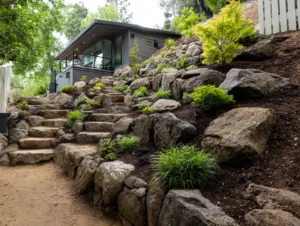
Not always. Unless your slope is wild or you’re carving out major flat zones, you can skip the wall. Plenty of steep hill landscaping ideas work without one — think terraced landscaping, anchor boulders, and deep-rooted plants that hold their ground. The wall? Optional. Smart slope landscaping that looks intentional? Non-negotiable.
Can I make my steep hill usable space?

Absolutely. That slope’s just begging for sloped yard landscaping magic. Add switchback paths, tiered decks, or slope seating for dining, gardening, or late-night hangs. Backyard slope ideas don’t flatten — they elevate. Embrace the terrain, build with it, and turn that hill into the standout feature you didn’t know you needed.
Your Hill. Your Rules.
If your hill’s ever made you feel overwhelmed, behind, or like you somehow “should’ve figured it out by now” — hey. I see you. I’ve been there, mud up to my ankles, wondering if I should just move.
But that slope? It’s not a mistake. It’s a canvas. A challenge, sure — but one that’s made for something beautiful, strong, and yours.
You don’t need to do it all at once. Just start. One step, one plant, one path at a time. You’ve already got the grit. Now you’ve got the plan.
And when that hill finally blooms into something stunning? You’ll know — it didn’t beat you. You built it.
And I’ll be over here cheering you on!
Dreaming of slope-side entertaining? Take it further with Backyard Outdoor Kitchen Ideas That Slay — because your hillside deserves margaritas and grill marks.
NVS Landscapes isn’t afraid of a challenge — in fact, they lean right into it. Their smart, visual-first approach to steep backyard hills proves that tricky terrain doesn’t have to mean design compromises. From tiered flower beds that double as erosion fighters to hardscaped retaining walls that create lounge-worthy levels, they show how to make a hill feel intentional, polished, and flat-out gorgeous.
Want to see it in action? Check out their full breakdown here:
Landscape Ideas for Steep Backyard Hills – NVS Landscapes

